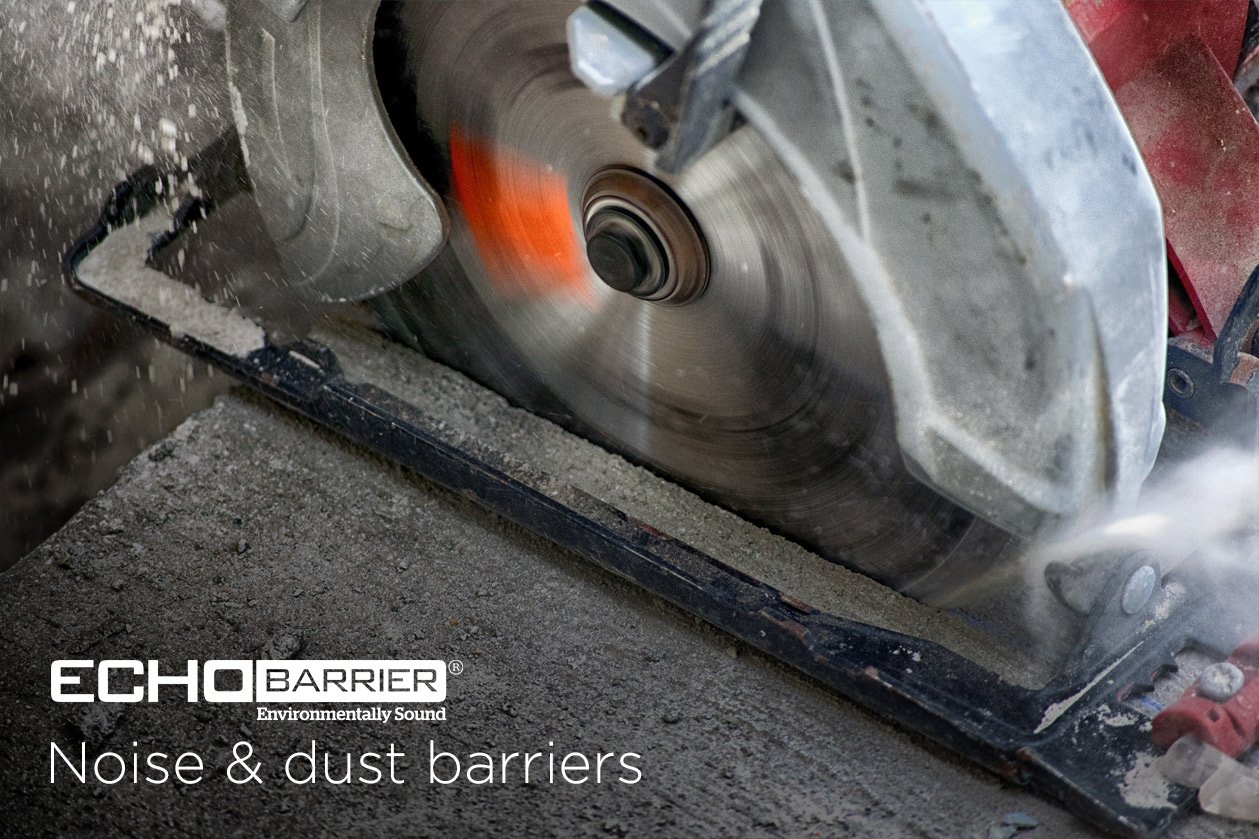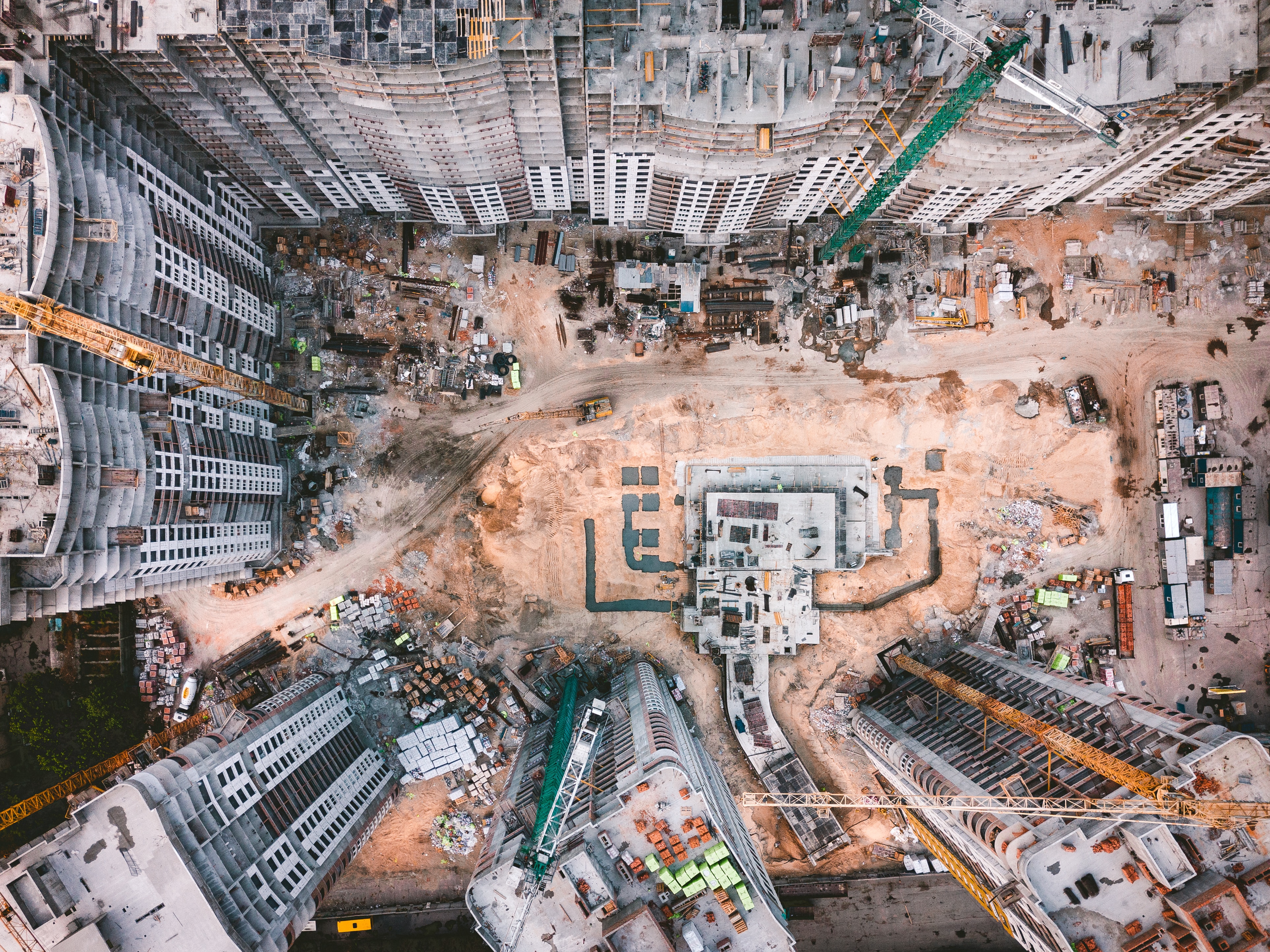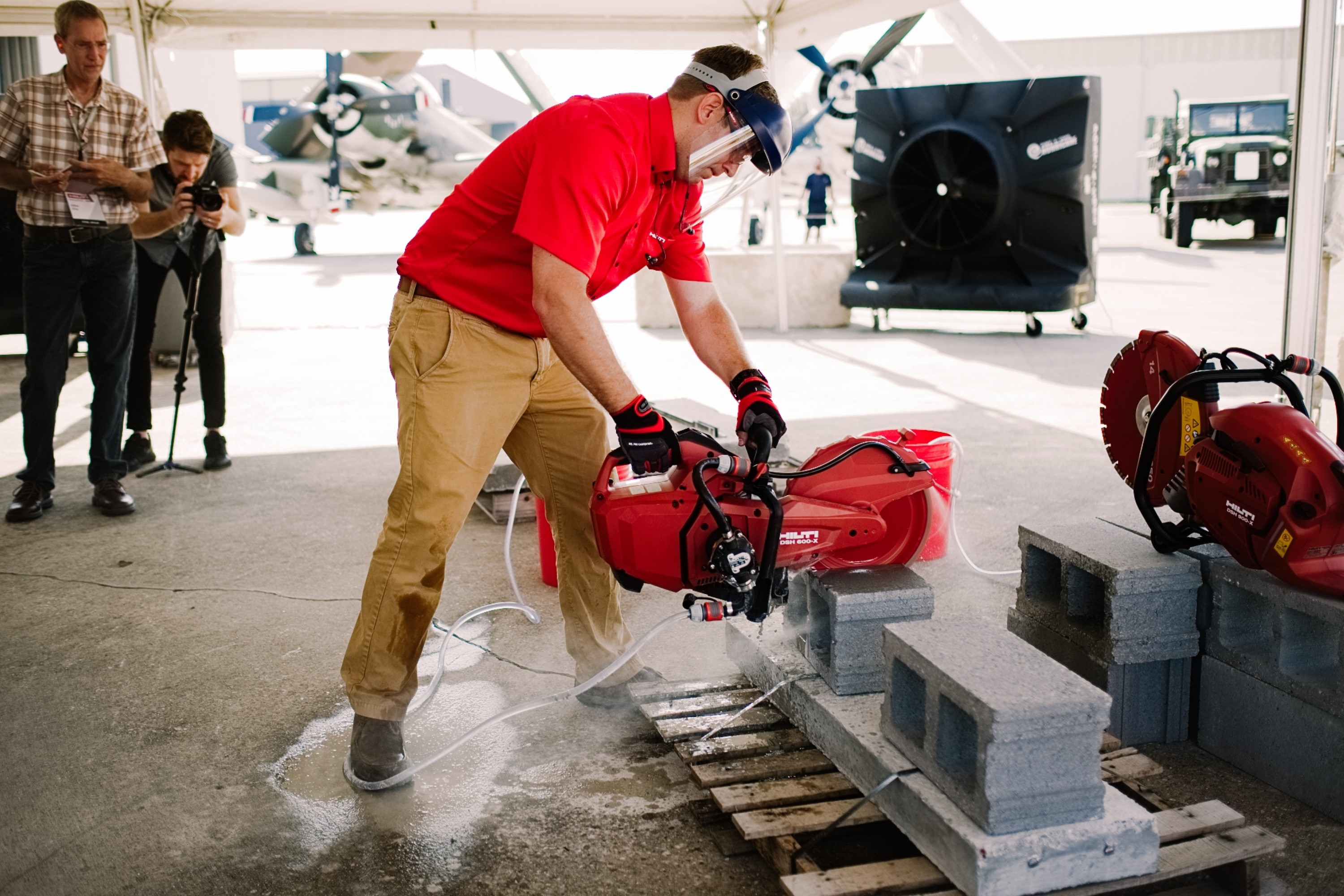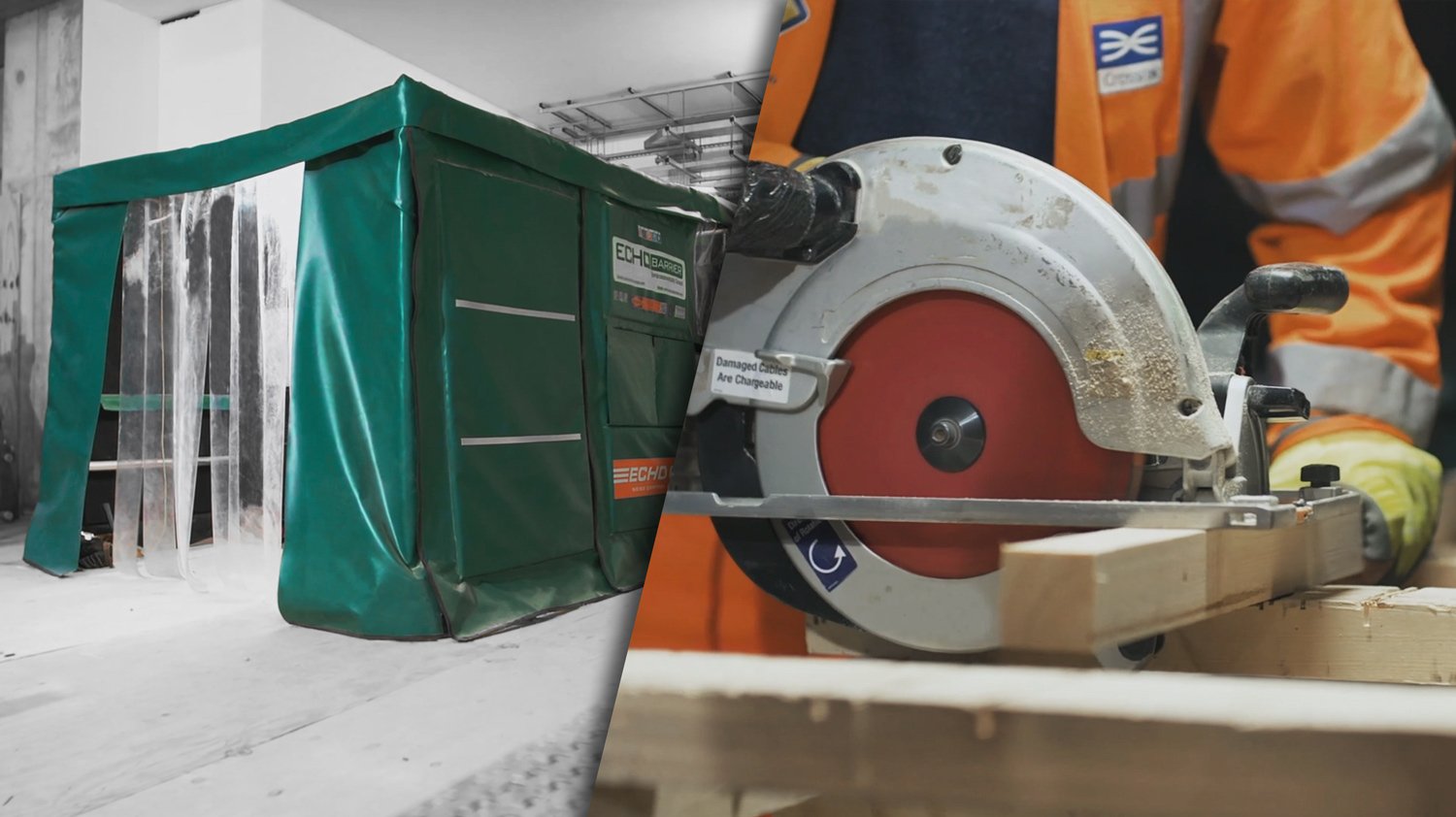
Silica dust inhalation is a serious workplace safety issue and something that OSHA (the Occupational Safety & Health Administration) emphasize. There are many methods that can be implemented in order to minimize the dispersal and subsequent inhalation of crystalline silica on a worksite. One such method is the containment of dust using durable enclosures and barriers.
Echo Barriers are designed to attenuate noise across a diverse range of applications, however their impermeability, durability and water- and fire-resistant properties mean that they also provide protection against the spread of dust and debris.
Jump to section
- The Dangers Of Silica Dust Exposure
- Effects Of Silica Dust Exposure
- Silica Dust Exposure Limits
- Controlling Silica Dust
- Noise & Dust Enclosures
The Dangers Of Silica Dust Exposure
Why is it so important to prevent the dispersal of crystalline silica? Silica in its natural state is not a threat and is in fact one of the most commonly occurring substances on earth, found in concrete, sand, glass, granite, stone, and more. However, problems arise when silica becomes pulverized and takes a crystalline form, which can be inhaled and cause silicosis, a form of occupational lung disease caused by inhalation of crystalline silica dust. Silicosis increases the likelihood of the development of a slew of other fatal illnesses like lung cancer, tuberculosis, and chronic bronchitis.
Those at highest risk of silica dust exposure include those in construction, mining, stonecutting, foundry work, glass manufacturing jobs, and any environment where there are cutting, drilling, and grinding activities, although the symptoms of silicosis may not become evident for months, years, or even decades.
Silica dust as a carcinogen and health threat is often likened to the more widely-known asbestosis, where inhalation of fine asbestos fibres results in bilateral diffuse interstitial fibrosis of the lungs.
Read: How Does Silica Dust Cause Cancer?

Many types of construction activities put employees at risk of respirable crystalline silica exposure.
Some common tasks and materials in commercial construction that will require protection from respirable crystalline silica include:
|
|
Effects Of Silica Dust Exposure
There are 3 types of silicosis:
Acute silicosis: the most immediate impacts of silica dust exposure are felt with acute silicosis, with symptoms being felt within several weeks up to a couple of years of regular silica inhalation. The lungs can fill with fluid and become inflamed, resulting in dramatic shortness of breath and reduced blood oxygen levels. Acute silicosis can cause weight loss, coughing, sharp chest pain and fatigue.
Chronic silicosis: this is felt after the fact, usually 10 to 30 after exposure to crystalline silica. Swelling in the lungs and chest lymph nodes makes breathing difficult, and the upper lungs are affected, often resulting in extensive scarring. Lung capacity continues to decrease, and the sufferer may require breathing assistance from medical devices.
Accelerated silicosis: felt within 10 years of high-level exposure, accelerated silicosis is the realisation of the symptoms of chronic silicosis within an earlier timeframe.
Watch: The Shocking Results Of Silica Dust Exposure
Silica Dust Exposure Limits
The Operational Safety & Health Administration has emphasized the importance of protection against silica dust exposure in recent years. In 2017 the administration introduced a heavy reduction to the permissible exposure limit for respirable crystalline silica by 80% to a limit of 50 µg/m3, measured as an 8-hour time-weighted average.

Prolonged exposure to silica dust can result in fatal illness.
Employers are required to adhere to this exposure limit as well as conduct exposure assessment and fulfill methods of compliance requirements except where those tasks listed under Table 1 of the 29 CFR 1926.1153 Respirable Crystalline Silica standard are being undertaken and the control measures are being adequately taken. Table 1 lists:
- eighteen tasks and equipment types;
- their necessary engineering and work practice control methods;
- any respiratory protection required; and
- “minimum assigned protection factor” based on shifts shorter than and greater than 4 hours.
You can find the full contents of Table 1 here.
Read: OSHA Silica Dust Exposure Guidelines
Controlling Silica Dust
Although it’s difficult to avoid the dispersal of crystalline silica dust when disturbed from concrete, stone, and other such materials, there are various tools and methods that can be used to keep the dust maintained and under control, avoiding the deadly effects of silicosis.
Read: 5 Ways To Control Silica Dust
Respiratory equipment is a must when it comes to handling silica dust from cutting, drilling and other activities handling rock, stone, and concrete. It is the final line of defense and therefore arguably the most important. Users must ensure that respirator masks are sealed properly to prevent airborne dust from entering the mask and your airways.
Modern construction and demolition machinery are becoming better-equipped for dealing with silica. There are options available on the market that come with attachments, such as drills fitted with vacuums or saws with water-delivery features – in fact, these innovations are often deemed a mandatory health and safety measure. These systems usually include a hose attachment, and must be designed commercially specifically for the product being used.
Alternatively, some manufacturers design pressurized tank systems or pump systems that don’t require a running water source.

Innovative water delivery systems prevent silica dust from dispersing.
It is important that the residual slurry resulting from using water to suppress the dust be disposed of. As outlined in OSHA’s Small Entity Compliance Guide for the Standard for Respirable Crystalline Silica for Construction, this needs to be done using a wet vacuum before the slurry dries. When emptying the vacuum, transfer the waste into a plastic bag and later a container, sealing it shut to prevent the release of the dust back into the workspace once dried. If the slurry manages to dry before collection, be sure to wet it again and clean it up with a wet vacuum.
Read: 2019 Best Vacuums For Silica Dust Removal
Noise & Dust Enclosures
Designed to abate noise in construction machinery, rigs, and at events, Echo Barrier temporary noise barriers and enclosures are built tough, and are able to withstand extremes of temperature, weather, and worksite conditions. This unrivalled durability means Echo Barrier products are also popularly implemented to prevent the spread of debris and dust, containing airborne waste within an enclosure.

Echo Barrier products like the CS Compact help control the spread of noise and dust.
By reducing the density of silica dust in the air, OSHA exposure limits for all employees external to the enclosure can be easily met (disregarding other activities being undertaken outside the enclosure). They have additionally been lab tested to demonstrate reductions of up to 43 dB, translating to a reduction of generally between 10-30 dB in the field, depending on other environmental variables.
The Echo Barrier CS Cutting Station is a cutting station enclosure that contains noise, dust, and debris within a tent-like structure, ensuring waste doesn’t reach other areas of the worksite. It has an extraction chute at the rear through which an appropriate silica dust removal system can be fed in order to remove dust from the air as soon as it becomes airborne. Watch the installation of the cutting station below:
The Cutting Station is assembled quickly and easily. Specially designed acoustic barriers are fitted with velcro onto a sturdy steel frame, which itself is mounted on wheels for mobility. Clear windows and strip curtains at the entrance allow for safe supervision while containing debris.
|
To learn more about Echo Barrier noise control systems and portable acoustic barriers, get in touch: |
 |


